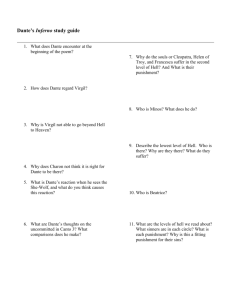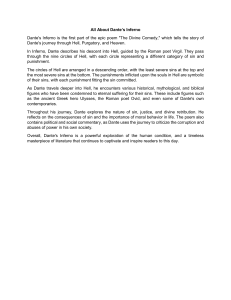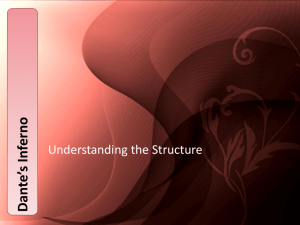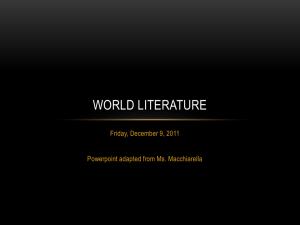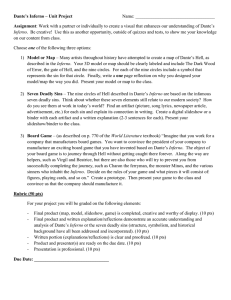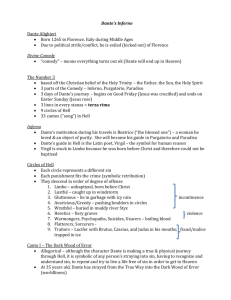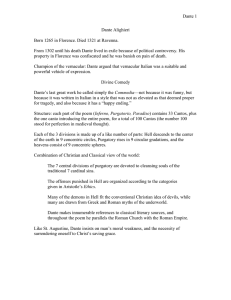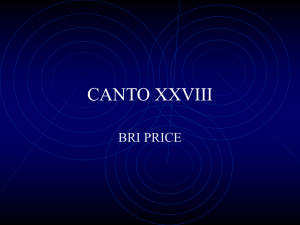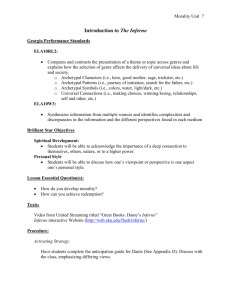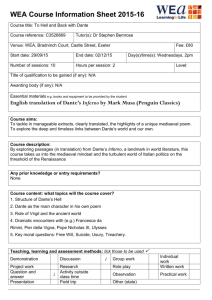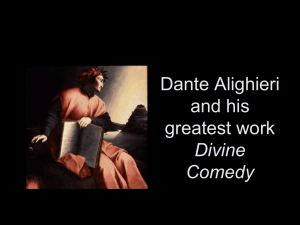For other uses, see The Divine Comedy (disambiguation), Inferno
advertisement
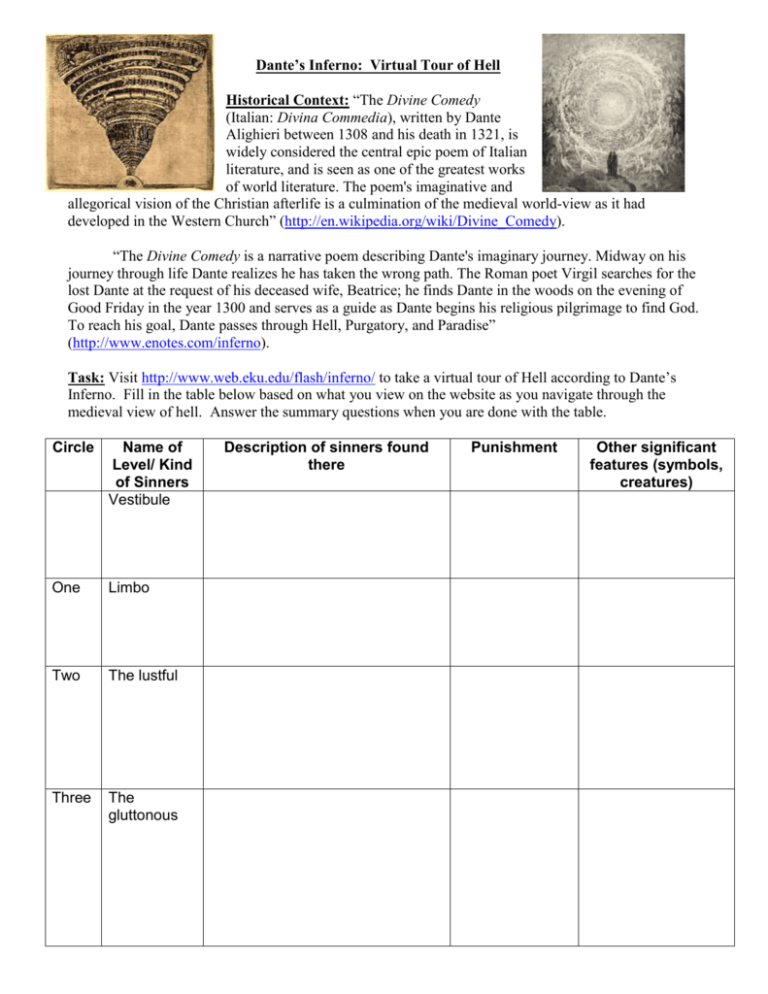
Dante’s Inferno: Virtual Tour of Hell Historical Context: “The Divine Comedy (Italian: Divina Commedia), written by Dante Alighieri between 1308 and his death in 1321, is widely considered the central epic poem of Italian literature, and is seen as one of the greatest works of world literature. The poem's imaginative and allegorical vision of the Christian afterlife is a culmination of the medieval world-view as it had developed in the Western Church” (http://en.wikipedia.org/wiki/Divine_Comedy). “The Divine Comedy is a narrative poem describing Dante's imaginary journey. Midway on his journey through life Dante realizes he has taken the wrong path. The Roman poet Virgil searches for the lost Dante at the request of his deceased wife, Beatrice; he finds Dante in the woods on the evening of Good Friday in the year 1300 and serves as a guide as Dante begins his religious pilgrimage to find God. To reach his goal, Dante passes through Hell, Purgatory, and Paradise” (http://www.enotes.com/inferno). Task: Visit http://www.web.eku.edu/flash/inferno/ to take a virtual tour of Hell according to Dante’s Inferno. Fill in the table below based on what you view on the website as you navigate through the medieval view of hell. Answer the summary questions when you are done with the table. Circle Name of Level/ Kind of Sinners Vestibule One Limbo Two The lustful Three The gluttonous Description of sinners found there Punishment Other significant features (symbols, creatures) Four The hoarders Five The wrathful Six The heretics Seven The violent 1. 2. 3. Eight The Fraudulent Nine Traitors 1. 2. 3. 4. Summary Questions: 1. How is earthly happiness symbolized in hell and how is it achieved in the medieval view? 2. Where does Dante get many of the ideas for who is in hell from? List some examples. (Can we say, “cultural diffusion” anyone?) 3. Did anything surprise you about what hell is like (according to Dante)? 4. If you lived in medieval Europe and read this book, what effect do you think it would it have on you? 5. Do any modern-day stories have any similarities to the creatures from this story? Other Websites to Check out! http://www.sparknotes.com/poetry/inferno/summary.html

